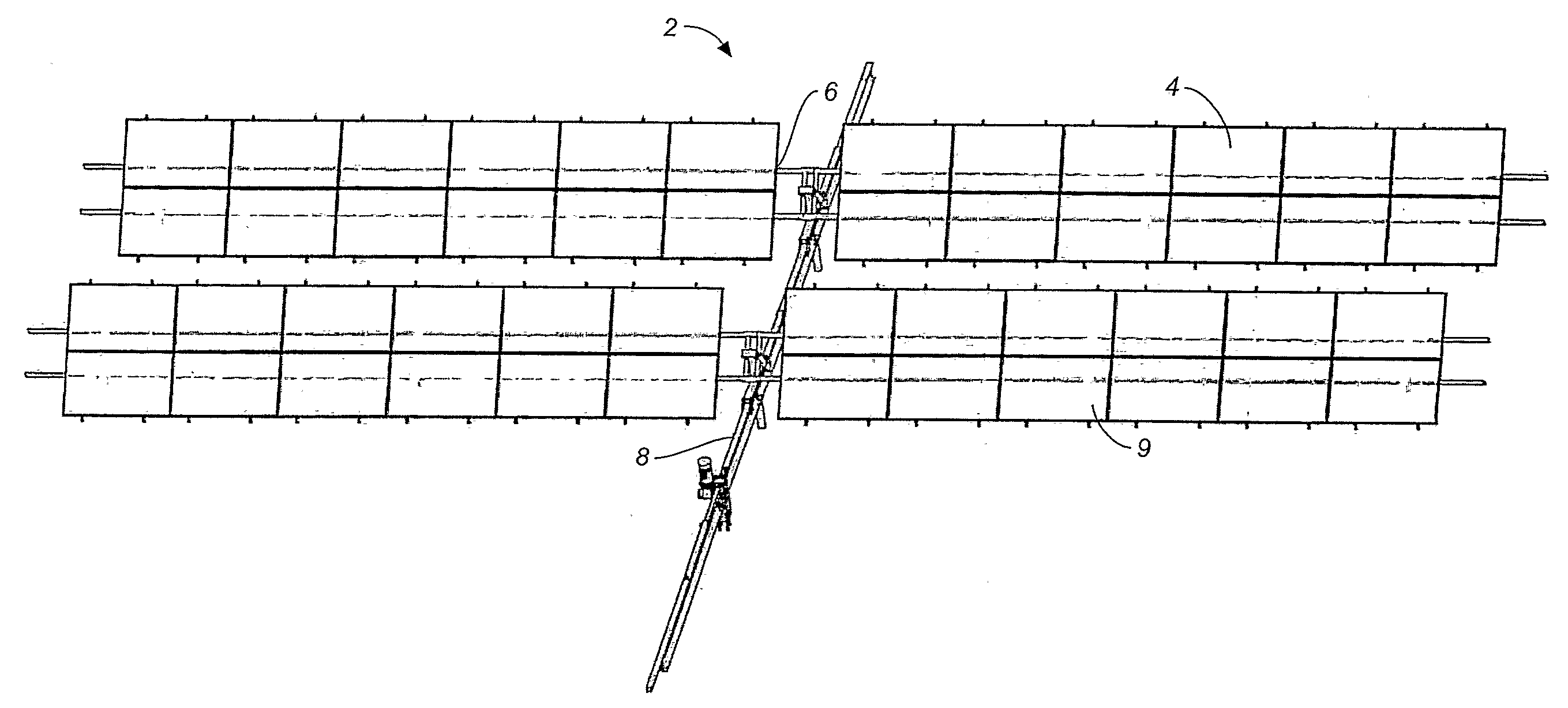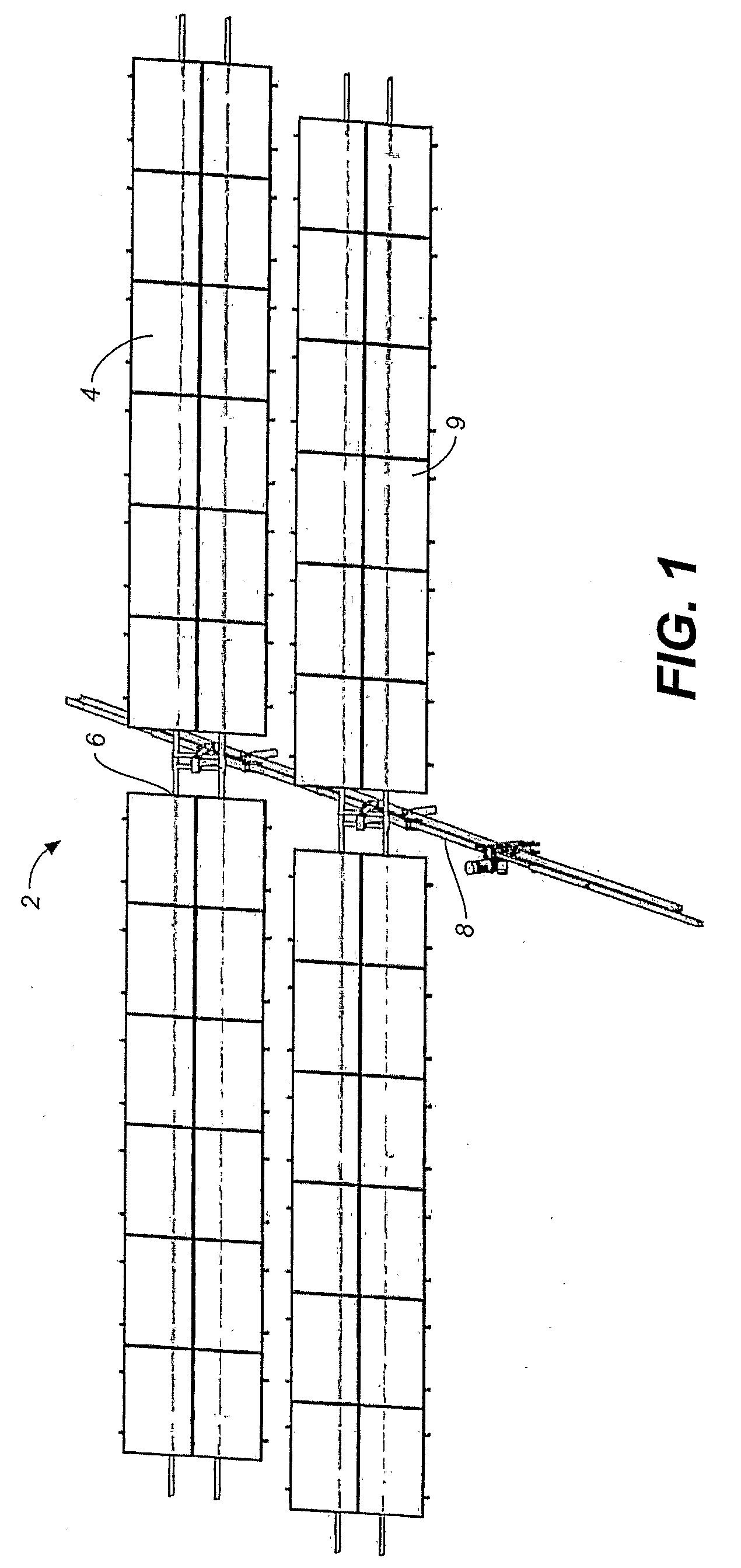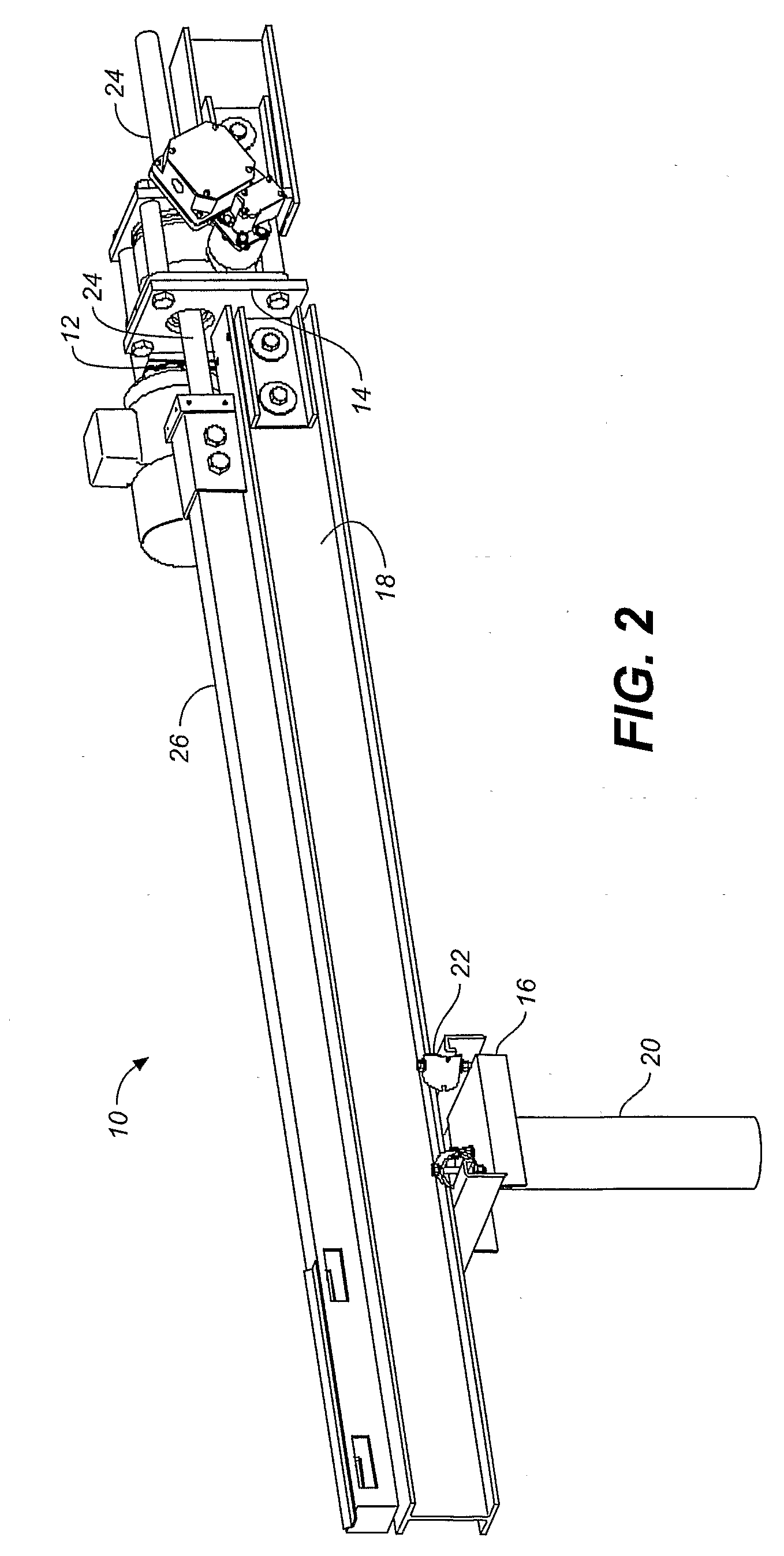Solar Panel Array Sun Tracking System
a solar panel array and tracking system technology, applied in the field of solar energy collection, can solve the problems of complex installation and commissioning of large solar panel array tracking systems using such drive mechanisms, inability to design the drive mechanism in the prior art, and inability to rotate large arrays in a single drive system, so as to reduce the cost of installation and commissioning, reduce the side load, and reduce the effect of for
- Summary
- Abstract
- Description
- Claims
- Application Information
AI Technical Summary
Benefits of technology
Problems solved by technology
Method used
Image
Examples
Embodiment Construction
[0091]Referring to FIGS. 1 through 7B, there is illustrated a new and improved solar power sun tracking system. FIG. 1 shows a first preferred embodiment of the solar tracking system of the present invention. The solar panel array 2 generally includes one or more rows of solar panels 4 mounted on a rotatable support structure 6 positioned with a rotation axis A for each panel oriented north and south. The drive system 8 is positioned on an east west axis perpendicular to the rotation axes of the solar panels in the array rows.
[0092]The solar panels in the array are disposed in the same pattern on each side of the of the drive system. This array pattern is repeated for additional rows north and south of the initial row. A series of support posts 9, which in general consists of vertical pilings driven into the ground and related connection hardware are typically used for the support of the array 2.
[0093]FIG. 2 shows a preferred drive system 10 for the solar panel array tracking system...
PUM
 Login to View More
Login to View More Abstract
Description
Claims
Application Information
 Login to View More
Login to View More - R&D
- Intellectual Property
- Life Sciences
- Materials
- Tech Scout
- Unparalleled Data Quality
- Higher Quality Content
- 60% Fewer Hallucinations
Browse by: Latest US Patents, China's latest patents, Technical Efficacy Thesaurus, Application Domain, Technology Topic, Popular Technical Reports.
© 2025 PatSnap. All rights reserved.Legal|Privacy policy|Modern Slavery Act Transparency Statement|Sitemap|About US| Contact US: help@patsnap.com



